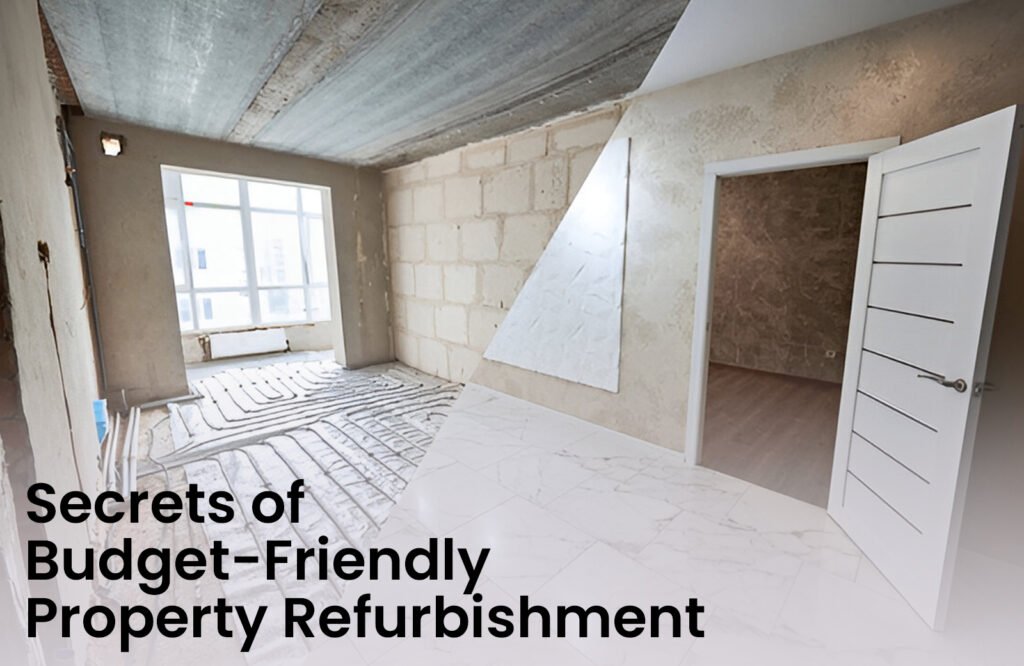Secrets of Budget-Friendly Property Refurbishment
Refurbishing a property can be an exciting project, but it often comes with a hefty price tag. Whether you’re sprucing up a space to increase its market value or simply making it more comfortable for your use, the costs can quickly add up. However, with careful planning, smart decisions, and a bit of creativity, you can achieve a beautiful refurbishment without breaking the bank. Here are some secrets to budget-friendly property refurbishment.
1. Plan Meticulously
The first and most crucial step in budget-friendly refurbishment is meticulous planning. Before you start any work, clearly outline what you want to achieve. Create a detailed plan that includes every aspect of the refurbishment, from the major renovations to the small finishing touches.
Break down the project into smaller tasks and prioritize them based on necessity. For instance, structural repairs should take precedence over aesthetic changes. This helps in managing the budget effectively by ensuring that essential repairs are addressed first.
2. Set a Realistic Budget
Once you have a plan in place, set a realistic budget. It’s essential to be honest about what you can afford and to stick to it. Overestimating your budget can lead to unnecessary expenses, while underestimating can leave you halfway through the project with insufficient funds.
Include a contingency fund in your budget, usually about 10-20% of the total cost, to cover unexpected expenses. Refurbishments often reveal hidden issues such as plumbing problems or structural weaknesses that require immediate attention.
3. DIY Where Possible
Labor costs can be a significant part of your refurbishment budget. One of the best ways to save money is by doing some of the work yourself. If you have basic skills in painting, tiling, or even assembling furniture, you can take on these tasks instead of hiring professionals.
However, be realistic about your capabilities. Attempting complex tasks like electrical wiring or plumbing without the necessary expertise can lead to costly mistakes and potential safety hazards. For such tasks, it’s better to hire professionals.
4. Reuse and Recycle Materials
Another secret to budget friendly property refurbishment is reusing and recycling materials. Instead of buying new materials, see if you can repurpose existing ones. For example, old wooden furniture can be sanded down and refinished to give it a new lease on life. Similarly, leftover tiles, bricks, or wood from previous projects can be reused in your current refurbishment.
Thrift stores, salvage yards, and online marketplaces can also be goldmines for finding inexpensive materials that add character to your property without the high price tag.
5. Shop Smart for Materials
When you do need to purchase materials, shop smart. Compare prices from different suppliers and look for discounts, sales, or bulk deals. Buying materials in bulk can often save money, but only do so if you’re sure you’ll use all the materials.
Consider alternative materials that offer the same aesthetic appeal but at a lower cost. For example, laminate flooring can mimic the look of hardwood at a fraction of the price. Similarly, acrylic countertops can provide the look of granite without the steep price.
6. Focus on Cosmetic Changes
Sometimes, small cosmetic changes can make a big difference without costing a fortune. A fresh coat of paint, new lighting fixtures, or updated cabinet handles can transform a space without requiring major renovations.
When choosing paint colors, lighter shades can make a room feel larger and more open, which is particularly useful in smaller spaces. Similarly, replacing old, outdated light fixtures with modern ones can instantly update the look of a room.
7. Negotiate with Contractors
If you’re hiring contractors, don’t be afraid to negotiate. Get multiple quotes from different contractors and use them as leverage to get a better deal. Contractors are often willing to lower their prices slightly to secure a job, especially if it’s a large project.
Additionally, consider hiring contractors during off-peak seasons when their services are less in demand. They may be more likely to offer discounts during these times to keep their schedules full.
8. Tackle One Room at a Time
Refurbishing an entire property at once can be overwhelming and expensive. Instead, consider tackling one room at a time. This allows you to focus your resources on one area, ensuring that it’s completed to a high standard before moving on to the next.
By spreading the refurbishment over time, you can also better manage your budget, as you won’t need to pay for all the materials and labor costs upfront. Additionally, this approach can reduce the disruption to your daily life, making the refurbishment process less stressful.
9. Energy Efficiency Upgrades
While energy-efficient upgrades may seem like an added expense, they can save you money in the long run. Installing energy-efficient windows, upgrading insulation, and using energy-saving appliances can reduce your utility bills significantly.
Some energy-efficient upgrades may also qualify for government rebates or tax incentives, further offsetting the initial costs. Over time, these upgrades can pay for themselves through reduced energy bills.
10. Know When to Splurge
While the goal is to refurbish on a budget, there are areas where it’s worth spending a bit more. For example, high-traffic areas like kitchens and bathrooms benefit from durable, high-quality materials that will last longer and require less maintenance.
Similarly, if a particular feature adds significant value to your property or improves your quality of life, it may be worth the investment. The key is to balance cost-saving measures with thoughtful splurges that enhance the overall result.
Conclusion
Budget-friendly property refurbishment is all about making smart choices. With careful planning, a realistic budget, and a mix of DIY, recycling, and savvy shopping, you can transform your property without overspending. Remember, a successful refurbishment isn’t just about how much you spend, but how wisely you allocate your resources. By focusing on both the essentials and the details, you can achieve a beautiful, functional space that reflects your style and meets your needs—all while staying within budget.


